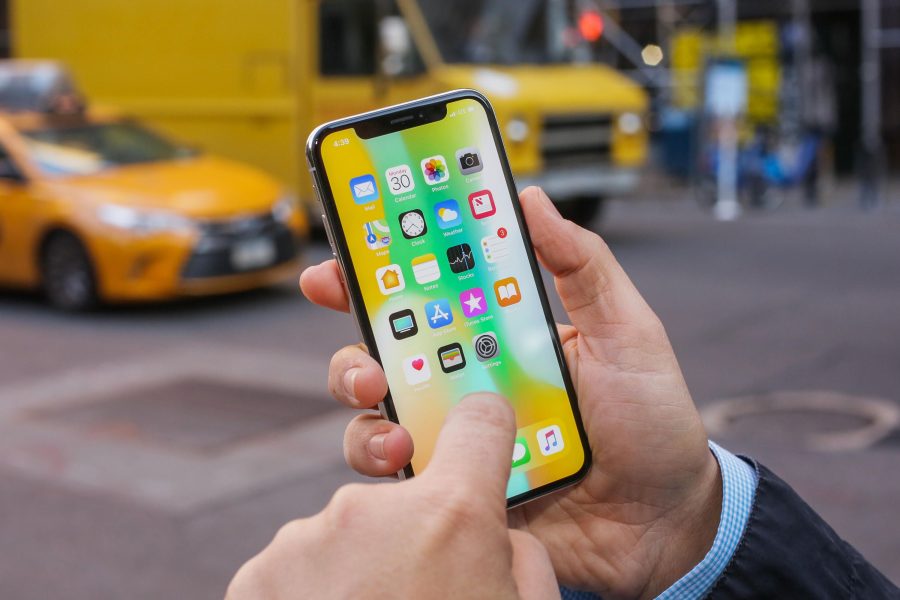Apple, the technology-based company, expected to have its greatest quarter in their history, according to CEO Tim Cook. The prediction had a disappointing result, meaning a decline in sales that represents a weaker position acquired by Apple in addition to the competition’s climbing statistics.
Because of the unexpected decay, the iPhone X underperforming production was cut from 40 million units to a 20 million stock. Since Apple usually cuts production after every festive period, it shouldn’t be a surprise this time, except that it is considering it wasn’t the expected but a decrease.

As well, Apple had and is still having significant issues with some of its products like the iPhone 7s, which presents a glitch on its mobile network, and the uncertainty the new MacBook with Apple-designed co-processor chips represents, leads the audience to question the decisions taken by the CEO.
No Service
A new bug affecting the iPhone has affected a percentage, a small one according to the company, of the series 7s cellphones, and it is, unfortunately, a hard fix. The company explains that an update of the software won’t help since the phone has to be physically repaired, as the origin of the bug, is found in the main logic board.
The glitch shows that the phone does not present a working mobile network, even though the coverage works just fine.
The devices Apple claims could be affected are the ones produced during September 2016 and February 2018, meaning almost all of them, specifically the ones marketed in Macao, China, Japan, and in the USA.
The corporation said it would repair for free the affected iPhones and will reimburse the clients that paid for a repair at the Genius Bar. Still, if the phone presents damage that could affect the process of repairing it, like a cracked screen, the user will need to pay for that issue before the repairing, according to the company statement release.
The defect has been going around for over a year now, and the company just acknowledged it a day ago.
A high-risk investment, the home-designed co-processor chip
According to Bloomberg, Apple has recently decided to design its own chip, since it represents an improvement on the experience and upstages the competence. But a more significant reason hides behind this decision, according to Bloomberg:
“Recently the company got a fresh incentive to go all-in on silicon: revelations that microprocessors with components designed by Intel Corp., Arm Holdings Plc and Advanced Micro Devices, Inc. are vulnerable to hacking.”
In 2008 an essential step taken by the company meant the beginning of a designed in-house new era. Apple bought, for $278 million, the microprocessor design boutique called P.A. Semi, which creates its own low-power sophisticated chips, ditching the old companies designing the company’s chips.
In 2010, the innovative technology was first installed on the first generation Ipad, and it has since then increased the success of the experience thanks to the efficacious processor.
This year, the suite of MacBooks and Mac Desktops that will be released will highlight the Apple’s processors. Features of the security-founded chip will be in the spotlight along with the most recent MacBook Pro Touch ID and Touch Bar.
This will only translate into another method for Apple to stand out, just like its products, in the technology field, blowing its competitors away.

However, the decision of CEO Tim to implement the changes still represents a considerable risk, but the company is striving to get its sales up again, even if it means lowering the production of other devices to help this new one find the audience attention and approval.
iPhone X cuts and tax payments
According to the UK Business Insider, the weak outlook among reports of production shortage has investors worried, since the major renovating design of the iPhone X was expected to enhance sales.
The company to reduce the concerns and improve its shape claimed it was preparing to focus on a possible net neutral capital structure that could take its cash net of debt from $163 million to zero.
Apple’s sales declined during the last quarter of 2017, failing the expectations set by the company, decreasing their perspective on possible benefits growth coming ahead.
Still, the company needs to repatriate tax payments that go up to $38 million because of changes made to the tax law. Apple states that a fee of this measurement would be the greatest of its type ever made, according to CNBC:
“Using the new 15.5 percent repatriation tax rate, the $38 billion tax payment disclosed by Apple means they are planning a $245 billion repatriation.”
$207 billion will represent then the leftovers that can be used by the company for investments, for example. According to SEC Filings, Apple had up to $252.3 billion in overseas cash by the end of September, meaning the tax payment is made mostly on foreign money.
Source: Forbes
